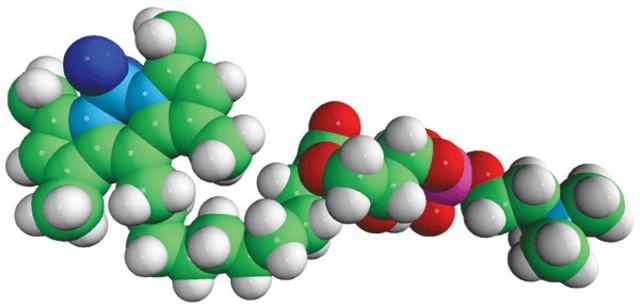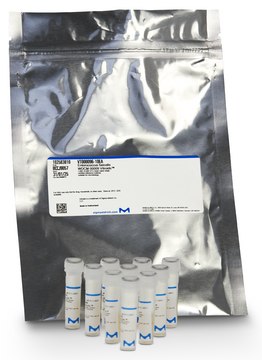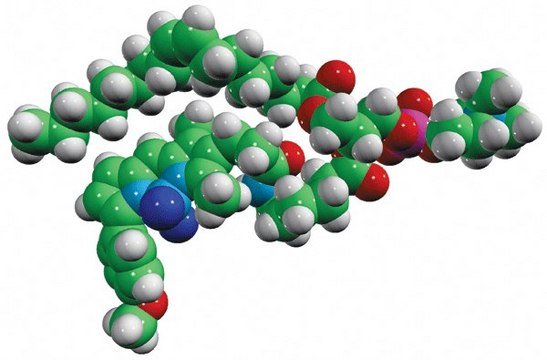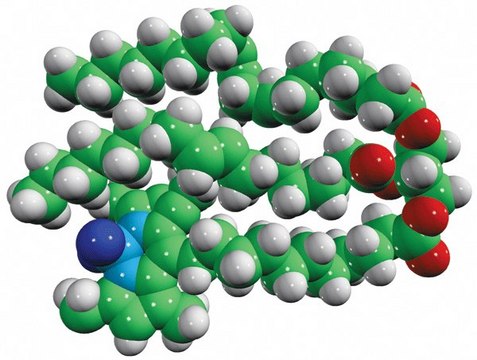810280P
Avanti
TopFluor™ Lyso PA
Avanti Research™ - A Croda Brand 810280P, powder
Synonym(s):
1-{12-[4-(dipyrrometheneboron difluoride)butanoyl]amino}dodecanoyl-2-hydroxy-sn-glycero-3-phosphate (ammonium salt)
Sign Into View Organizational & Contract Pricing
All Photos(2)
About This Item
Empirical Formula (Hill Notation):
C32H54BF2N4O8P
CAS Number:
Molecular Weight:
702.57
MDL number:
UNSPSC Code:
12352211
NACRES:
NA.25
Recommended Products
Assay
>99% (LPA; may contain up to 10% of the 2-LPA isomer, TLC)
form
powder
packaging
pkg of 1 × 1 mg (810280P-1mg)
manufacturer/tradename
Avanti Research™ - A Croda Brand 810280P
shipped in
dry ice
storage temp.
−20°C
General description
Lysophosphatidic acid (LPA) is a water-soluble, bioactive phospholipid. It is seen in mammalian cells and tissues, including blood. LPA is usually formed during the synthesis of phospholipid of cell membranes. It is produced by various cells like, activated platelets, epithelial cells, leukocytes, neuronal cells and tumor cells.
Application
TopFluor™ Lyso PA may be used as the chromophore and as a component in the formation of the Langmuir-Blodgett (LB) film.
Biochem/physiol Actions
Lysophosphatidic acid (LPA) is very essential in signaling. It may alter proliferation, survival, cytoskeletal changes and calcium influx. It plays a key role in neointimal formation, endothelium dysfunction, monocyte attraction and adhesion.
Packaging
5 mL Amber Glass Screw Cap Vial (810280P-1mg)
Legal Information
Avanti Research is a trademark of Avanti Polar Lipids, LLC
TopFluor is a trademark of Avanti Polar Lipids, LLC
Storage Class Code
11 - Combustible Solids
Choose from one of the most recent versions:
Certificates of Analysis (COA)
Lot/Batch Number
Sorry, we don't have COAs for this product available online at this time.
If you need assistance, please contact Customer Support.
Already Own This Product?
Find documentation for the products that you have recently purchased in the Document Library.
Lysophosphatidic Acid Triggers Apoptosis in HeLa Cells through the Upregulation of Tumor Necrosis Factor Receptor Superfamily Member 21
Dong Y, et al.
Mediators of Inflammation (2017)
Diffusional motion as a gauge of fluidity and interfacial adhesion. Supported alkylphosphonate monolayers
Baumler SM, et al.
Journal of Colloid and Interface Science, 468, 145-155 (2016)
Lysophosphatidic acid triggers apoptosis in HeLa cells through the upregulation of tumor necrosis factor receptor superfamily member 21
Dong Y, et al.
Mediators of Inflammation (2017)
Lysophosphatidic acid (LPA) receptors: signaling properties and disease relevance
Lin ME, et al.
Prostaglandins & other lipid mediators, 91(3-4), 130-138 (2010)
Lauren P Saunders et al.
The Journal of biological chemistry, 286(34), 30130-30141 (2011-07-02)
Autotaxin (ATX) is a secreted lysophospholipase D that hydrolyzes lysophosphatidylcholine (LPC) into lysophosphatidic acid (LPA), initiating signaling cascades leading to cancer metastasis, wound healing, and angiogenesis. Knowledge of the pathway and kinetics of LPA synthesis by ATX is critical for
Our team of scientists has experience in all areas of research including Life Science, Material Science, Chemical Synthesis, Chromatography, Analytical and many others.
Contact Technical Service





